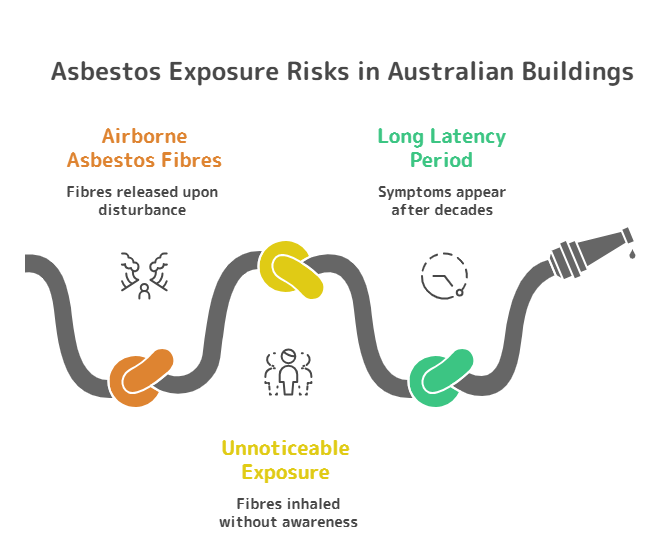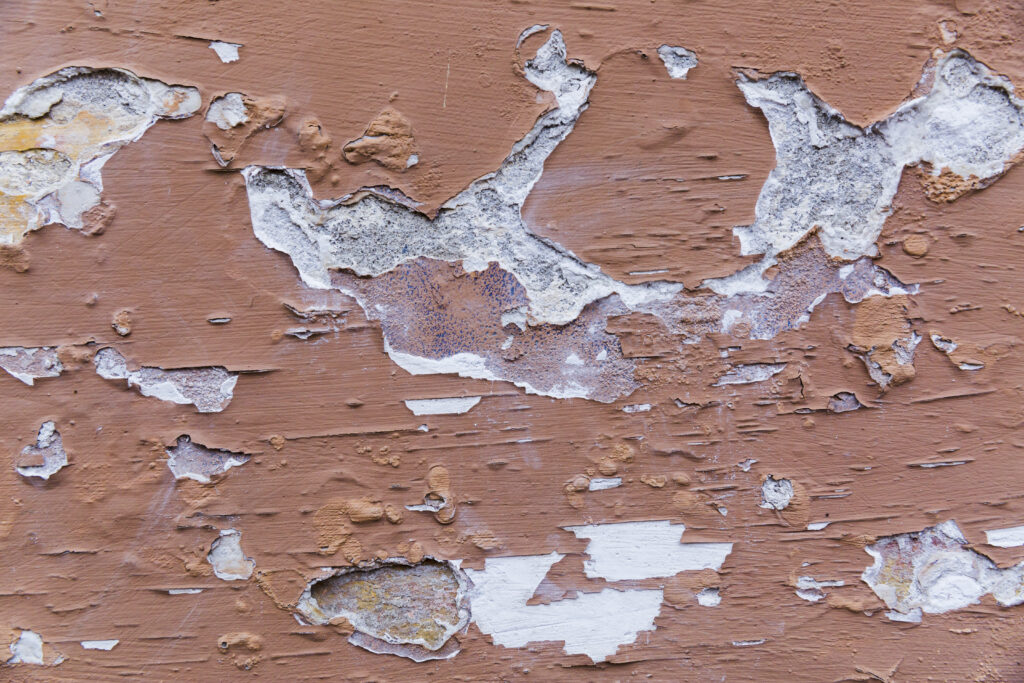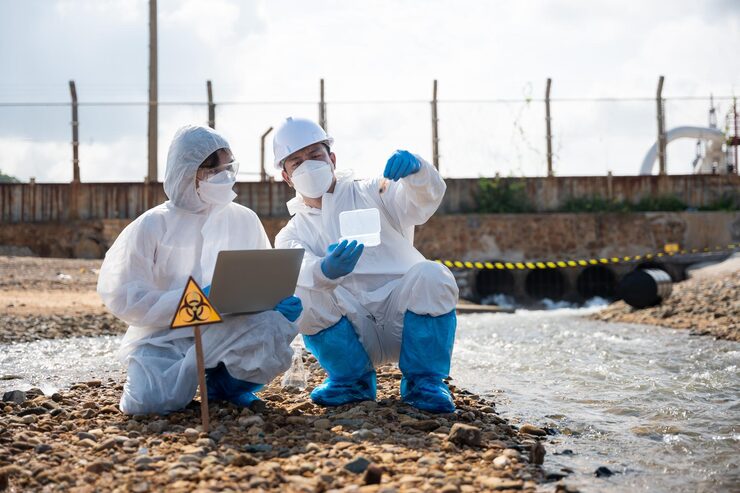Asbestos was a popular construction material from 1945 until the 1980s in Australia because of its insulation capacities and non-corrosive nature. Asbestos was also used in spray paints to make textured ceilings. Even now, the presence of asbestos paint can be found in older Australian schools and other public buildings, which has been a concern for public health. Want to know why asbestos is a threat to public health? This blog will investigate why the presence of asbestos paint in schools and public buildings has been a threat to public health.
Asbestos is an environmental mineral that is heavily fibrous. In aged structures, like schools and other public buildings, asbestos-induced paint can often be found. This paint can impose serious harm on the well-being of children and young people. Exposure to longer times in asbestos fibres can lead to health risks such as Mesothelioma, lung cancer, and asbestosis. Asbestos in paint can also spread through fibres in older structures. But what is there in the asbestos paints? Let’s find out.
What is Asbestos Paint and Why is it Harmful?
In the mid-20th century, the walls and ceilings of Australian houses were covered with textured asbestos-induced paints. It used to provide depth to the walls and the roofing. Eventually, asbestos’s quality of insulation was discovered. Asbestos in schools and public buildings was already being used as a sturdy corrosion reducer. Plus, asbestos was also introduced in paints.
Why Was Asbestos Added To Paints?
Asbestos was added to paints to improve the paint color and create a good insulation mechanism. Furthermore, it would make the structure more durable and resistant to fire. During the 1950s to 1980s, most of the Australian buildings were covered with asbestos paints.
Where Can Asbestos Be Found Still?
Alongside paints, asbestos in public buildings can be found in the walls, ceilings, and structural beams. Furthermore, the interiors of many public buildings were also made with asbestos-containing materials like asbestos-induced fibro cement.
Why Asbestos Paint Is A Hidden Danger?
As old as it gets, asbestos in paints becomes more harmful. Once disturbed, the asbestos-containing materials (ACMs) fibres can be spread, as these fibres are airborne. The airborne asbestos fibres can impose health risks when inhaled. It can cause redness, swelling, and scarring of the lung tissue (fibrosis). Furthermore, it can increase the risk of asbestosis, lung cancer, and pleural disorders. Let’s see how asbestos paints can spread into the air:
- Microscopic fibres of asbestos can be released from deteriorating paints of old public buildings when the walls or surfaces are peeled or sanded.
- Children and people become prone to health risks after being exposed to these harmful asbestos fibres. Without proper protection, they can inhale the invisible fibre.
- Prolonged exposure to asbestos particles can lead to serious lung issues, such as asbestosis and lung cancer.
The Growing Concern in Schools and Public Buildings
Many Australian schools and public buildings were built before the 1980s, which contain asbestos in paints and asbestos-containing materials (ACMs). Let’s see how schools and public buildings are prone to the risks caused by asbestos paint.
In most cases, asbestos paints and coatings pose significant threats to the health of the students and the teachers. Especially in schools and public buildings that were built before the 1980s, which contain old asbestos, which is highly contaminated. Generally, classroom ceilings, hallways, sidings, and even the window frames can contain asbestos. Let’s see how asbestos can behave when disturbed:
In Classrooms
Flaky and microscopic fibres of aging asbestos paint can be airborne. From minimal movement of desks, to accidental wall tear, a little disturbance to asbestos surfaces can release the fibres, posing significant health risks on the children and staff in the schools.
Unnoticeable Exposure
These fibres can not be seen with the naked eye, as teachers and students can frequently inhale them. In public buildings, the presence of asbestos fibres is directly inhaled by people, often without awareness.
Long Latency Period
Health concerns associated with asbestos can stay up to 20 to 40 years. This means that children exposed to asbestos fibre in primary schools can experience related symptoms in their middle age. Therefore, prevention becomes a critical part, and early detection is important.

Health Risks Linked to Asbestos Paint
The health harms caused by asbestos can remain in the body for long term. In the context of schools and public buildings, the danger of asbestos paint exposure can be concerning for children and the common public considering the long-term harm.
Asbestosis
If asbestos fibres are inhaled for a long time, it can lead to asbestosis. Some common symptoms of it include more frequent breathlessness, scarring in the liver, and faulty lung function. With every renovation work in schools or public buildings, the children and the staff become more prone to falling ill from the asbestos particles.
Mesothelioma
This is a rare type of cancer that can aggressively impact the lung. It takes time to develop, but once it does, Mesothelioma is one of the deadliest types of cancers in Australia, caused by overexposure to asbestos. Every year, around 700 to 800 people are diagnosed with Mesothelioma in Australia. This shows that asbestos exposure can significantly harm people in the long term.
Risk to Children
Since children breathe faster and they often wander around different areas of school buildings, they can inhale even more asbestos fibers coming from asbestos paints compared to adults. Therefore, it should be the priority to consider asbestos remediation in schools and other academic buildings.
Here is a concise table that reflects children’s and adults’ risks, considering the health impact of asbestos fibre:
| Exposure Duration | Children’s Risk | Adult Risk | Potential Health Impact |
|---|---|---|---|
| Short-term (weeks/months) | Increased health risk due to underdeveloped lungs | Moderate risk | Mesothelioma risk still possible |
| Medium-term (years) | High risk of long-term disease development | Moderate to high risk | Asbestosis, early lung damage |
| Long-term (decades, e.g., teachers/employees) | Increased risk when the children get older | Very high risks | Lung cancer, a severe type of asbestosis, and mesothelioma |
Table 1: Comparison of Asbestos Risks Posed to Children and Adults
Identifying and Managing Asbestos Paint
In older structures like schools and public buildings made before the 1980s, asbestos in paint can be found. Through asbestos inspections and regular audits, traces of asbestos are identified in public buildings.
How Asbestos Inspections and Audits Are Carried Out
Asbestos testing cannot be performed with the naked eye or just by simply tapping on the asbestos material. Without licensed asbestos inspectors, asbestos testing can be risky. Expert asbestos testers take a small sample in the areas where there is potential asbestos presence.
In older school or public buildings, asbestos testers take small chunks of the asbestos in paint. Then these samples are brought to accredited laboratories for testing. This testing is done in a NATA (National Association of Testing Authorities) recognized laboratory. Based on the result that shows the presence of asbestos in public buildings, an asbestos register is created, recording the location, type, and risk level of identified ACMs.
Safer Alternatives and Remediation Practices
Since site assessment is a time-consuming and costly procedure, many people turn to safe, alternative remediation practices like encapsulation of the ACMs and complete elimination of asbestos-containing materials. For important public buildings, the permanent elimination of asbestos-affected structures is the most effective way to reduce health concerns.
Encapsulation and Sealing as a Temporary Measure
Asbestos encapsulation is a method of covering or enclosing the ACM-induced areas with a protective layer, which can restrict the fibres from releasing into the air. The typical encapsulation process includes different steps, including:
- Assessment and surveillance of the areas by the certified professionals.
- Preparation of encapsulation starts by sealing all the ventilators, doors, and windows. In many cases, HEPA filters are set up to capture the asbestos fibres.
- The encapsulation process is done by applying a coated layer on the ACMs.
- Once the encapsulation is done, the inspection and testing are carried out repeatedly.
- Constant monitoring through frequent inspection of the air for asbestos fibres is done to ensure controlled asbestos presence.
Complete Asbestos Disposal for Long-term Safety
Complete disposal of structures with asbestos paints is the most responsible and effective way for long-term health safety. Asbestos in public buildings can be cleared through visual inspection. The four-stage process of asbestos disposal is considered more compliant with legal factors.
- Step 1: Pre-cleaning inspection, which includes assessment requirements, documentation, and recording.
- Step 2: Thorough cleaning by using HEPA vacuum and wet methods.
- Step 3: Overall air inspection, through background and enclosure testing
- Step 4: Effective final visual inspection
Here is a comparative discussion between encapsulation and the complete elimination of asbestos at a glance.
| Methods | Encapsulation | Complete Elimination of Asbestos |
|---|---|---|
| What It Means | Applying a special sealant or coating over asbestos paint to lock fibres in place | Certified experts dispose of any asbestos-containing materials (ACM) |
| Pros |
|
|
| Cons |
|
|
| Best For | Buildings where asbestos is stable, not damaged, and budgets are limited | Schools/public buildings needing long-term safety and compliance with Australian WHS standards |
Table 2: Different Types of Asbestos Disposal
Tips for Protecting Communities
Asbestos can pose serious health issues to the communities, especially to the children studying in older schools. Here are some tips to protect the communities from the risk of asbestos exposure.
- Encourage site inspection and frequent safety audits
- Awareness regarding asbestos-induced diseases
- If asbestos is identified, use proper safety gear like PPE kits.
- Encapsulation and clearance should be done as early as possible.
- Do not conduct DIY identification of asbestos.
Wrapping Up
Asbestos paint in Australian schools and public buildings can cause serious public health concerns. The more these structures age, the more critical it becomes to identify, protect, and manage the process of asbestos elimination to reduce the health risks to the children. It is important to encourage the building managers and the local council to raise awareness regarding frequent asbestos inspections.
Consider a Professional Asbestos Inspection!
Suspecting asbestos paint in your school or public facility? A professional asbestos inspection can be consulted to evaluate the site and reduce the health hazards.
Frequently Asked Questions
How Often Should I Do a Site Assessment for Asbestos?
Site assessment can be done once a year at a minimum. However, it is crucial to consider doing it frequently in schools regarding the child’s health and safety.
How Can I Check Asbestos Contamination in the Lungs?
A general X-ray will be able to evaluate the asbestos contamination in the lungs.
Do All Inspectors Who Conduct Site Assessments Need a License for Multiple Sample Retrieval?
Yes, whatever number of samples an inspector may take, they will need a sample.





